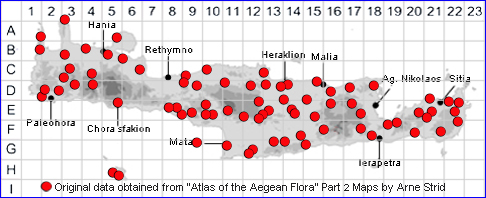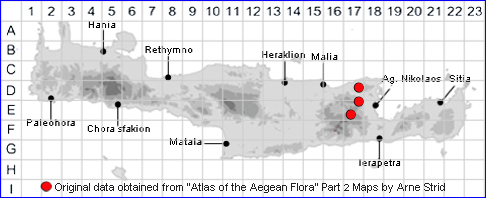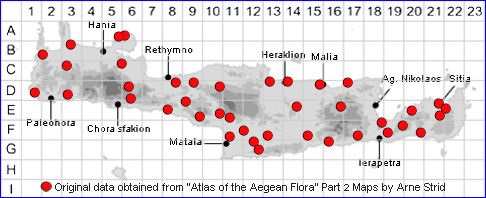
SPECIES DESCRIPTION
OPHRYS LUTEA
Including the following subspecies:
Family and Genus:- See- ORCHIDACEAE
Common Names:- None
Homotypic Synonyms:- None
Meaning:- Ophrys (L) Eye-brow, a name used by the Roman naturalist and
philosopher Pliny.
Lutea.(L) Yellow, vile, of clay, muddy.
General description:- Usually small and slender perennial.
Stem:-
1) 8-25 cm tall.
Leaves:-
1) Basal, ovate, acute.
Flowers:-
1) Spike, short. with 2-6 flowers often held ± horizontally.
2) Sepals, 7-12 mm, elliptic-ovate, yellowish-green.
a) lateral spreading.
b) middle, cymbiform and curved over the column.
3) Petals, 4-8 mm, oblong with flat margin, yellowish-green, glabrous.
4) Labellum, broadly obovate in outline, almost flat; with somewhat upcurved
margins, shallowly 3-lobed.
a) lateral lobes and a broad, sometimes emarginate
b) middle lobe, medium brown to orange-brown with a usually broad yellow
margin, mirror rather inconspicuous.
5) Column short, rounded.
Fruit:-
1) Capsule, dehiscing, by 3 or 6 longitudinal slits.
2) Seeds, numerous, minute, with undifferentiated embryo and no endosperm
Key features:-
1) Anther-connective obtuse.
2) Inner perianth-segments white, yellowish or green.
3) Labellum with flat margin, and a yellow, glabrous or hairy marginal zone.
Habitat:- Dry open shrubby vegetation, scrubland vegetation, open coniferous
woodland, terraced olive groves, rocky ftats, 0-700(-1100) m
Distribution:- Common in S & W Greece, lacking in the interior and most of the N.-
W widespread in the Medit. region, eastwards to S Anatolia and Lebanon.
Flowering time:- Late Feb to May (mostly March-Apri|).
Photos by:-
~~~~~~~~~~~~~~~~~~~~~~~~~~~~~~~~~~~~~~~~~~~~~~~~~~~~
OPHRYS LUTEA subsps GALILAEA, LUTEA & MELENA Back to Top
All resembling Ophrys lutea, but differering in the following characters
Subsp. galilaea Flowers small; labellum 7-12 mm, :± straight, yellow margin
2-3 mm wide (i.e. side lobes almost entirely yellow).
Distribution:- Mostly in the C & E Mediterranean region, eastwards to Palestine.
Habitat:- As for O. lutea
Flowering time:- As for O. lutea
OPHRYS LUTEA subsps GALILAEA, LUTEA & MELENA Back to Top
All resembling Ophrys lutea, but differering in the following characters
Subsp. galilaea Flowers small; labellum 7-12 mm, :± straight, yellow margin
2-3 mm wide (i.e. side lobes almost entirely yellow).
Distribution:- Mostly in the C & E Mediterranean region, eastwards to Palestine.
Habitat:- As for O. lutea
Flowering time:- As for O. lutea
Subsp. lutea: Flowers large; labellum 13-18 mm,
with a knee-like bend at th base, yellow margin 3-6 mm wide.
Distribution:- Widespread in the Mediterranean. region, east to SW Anatolia.
Habitat:- As for O. lutea
Flowering time:- As for O. lutea
with a knee-like bend at th base, yellow margin 3-6 mm wide.
Distribution:- Widespread in the Mediterranean. region, east to SW Anatolia.
Habitat:- As for O. lutea
Flowering time:- As for O. lutea
Subsp. melena Flowers medium-sized; labellum 10-14 mm, ± straight, yellow margin c. l mm, side lobes predominantly orange-brown.
Distribution:- Greece and Albania, doubtfully in Crete.
Habitat:- As for O. lutea
Flowering time:- As for O. lutea
Distribution:- Greece and Albania, doubtfully in Crete.
Habitat:- As for O. lutea
Flowering time:- As for O. lutea


